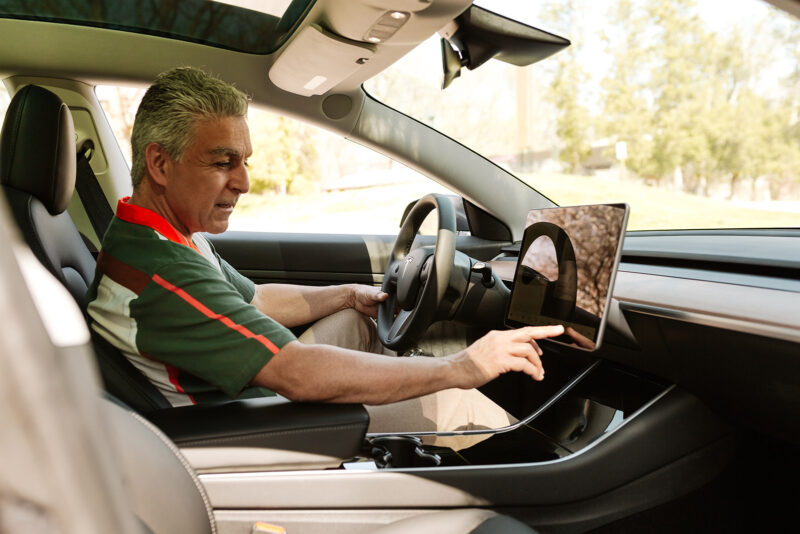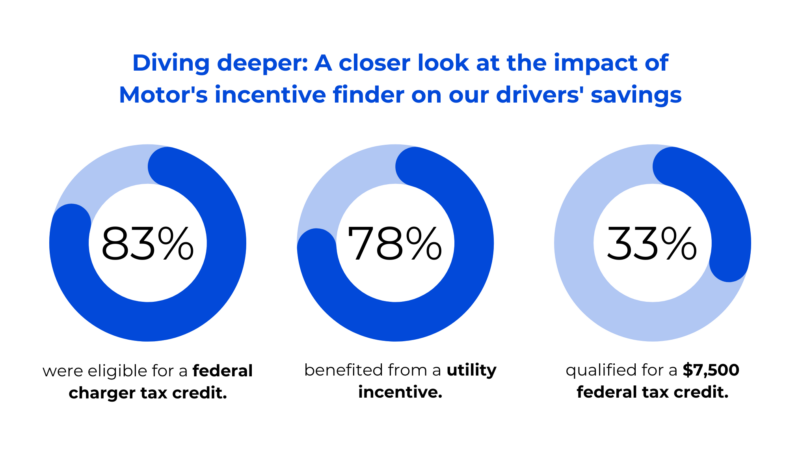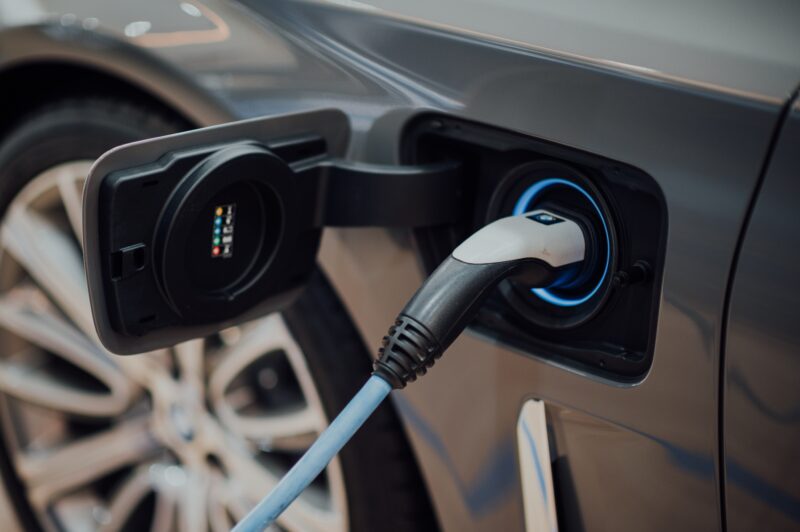We’ve helped hundreds of people drive electric. Here’s what we’ve learned about common concerns for prospective buyers.
The market share for battery electric vehicles was a record-breaking 8.1% in Q4 2023. It’s clear: Americans are embracing EVs like never before.
Yet, drawing from numerous surveys and studies, purchase price and charging concerns are at the forefront of decision-making for the next wave of EV purchasers. Are EVs still too expensive? Are there enough charging stations? Can you take one on a road-trip?
Motor has helped hundreds of people drive electric since 2020, and we’ve gathered real world data and practical insights from our community to shed light on if these concerns persist past purchase. Are you ready to separate fact from fiction?
Electric Vehicles are too expensive
One of the primary concerns for new EV shoppers is the purchasing price.
Some context: In 2024, the average price of an EV sits at $55,000, which is 17% higher than the overall new market average. Why? As with many products, the early market was geared towards affluent early adopters and an abundance of luxury EV purchases is driving up the average.
However, with new EV’s coming onto the market seemingly every month, there are now plenty of budget friendly options. Here are the cheapest EVs as of February 2024. Some of our favorite examples:
- Despite being discontinued, you can still find some 2023 Chevrolet Bolt EV or EUV models for about $20,300 (this price includes the tax credit of $7,500).
- Next up is the Nissan Leaf S at $28,140 (not eligible for tax credit). Followed by the Volkswagen ID.4 at $32,290 or the Tesla Model Y RWD at $38,130 (both including the tax credit).
And as with any vehicle, we need to consider the total cost over lifetime. Whether an EV is cheaper than its gas-powered counterpart depends on various factors: initial purchase price, incentives, financing, registration, insurance, maintenance costs, charging habits, and ownership duration. Where you charge your car plays a big role in how much you spend on it. If you can charge at home or subsidized through your workplace, you can save a good chunk on fuel.
So, it’s a personal case! However, for reference, this study found that the higher initial purchase price of an EV is “more than offset by fuel and maintenance cost savings – which make EVs more cost-effective over their life.” And in exploring the total ownership costs after 10 years for various electric models, they are lower than their gas powered equivalents: by 29% for a Chevrolet Equinox EV, or 13% for a Ford Lightning or Mustang Mach-E.
Motor’s Insights
We’ve guided hundreds of EV drivers through their purchasing journey – from a 2016 Volkswagen eGolf to a 2020 Tesla Model 3 to a 2023 Ford F-150 Lightning. Over 75% of our EV owners bought a car below the mentioned average EV price of $55,000.
Motor offers expert advice to help you save money throughout your entire EV ownership lifecycle, from purchase to home charging installation and even saving on road trips. Of customers who have used this service:
- An impressive 83% were eligible for a federal charger tax credit.
- 78% benefited from a utility incentive.
- Many were eligible for state incentives, for example a $5,000 purchase price rebate in Vermont.
- 33% qualified for a $7,500 federal tax credit.
Navigating through the maze of EV and charger options while staying updated on the ever-changing landscape of federal tax credits and incentives can be daunting. That’s where we come in!
Explore our incentives tracker here to check your personal case!
There are not enough places to charge
Another pressing concern amongst prospective EV drivers is charging.
Some context: Did you know that 80% of all EV charging in the US takes place at home?
Over a 100 years of stopping to get gas has trained us to believe that we need gas stations everywhere. For most EV drivers that just isn’t the case. The convenience of charging in their own garage is unparalleled. Many start with a basic household plug (Level 1), but eventually, about 60% opt to upgrade to a Level 2 charger for faster, more efficient and cheaper charging, especially if you can take advantage of off-peak electricity rates.
What about public charging stations? These are crucial for those who are unable to charge at home, or on road trips (more below).
According to the Department of Energy, US public charging stations nearly doubled from late 2019 to mid-2023. And we’re just getting started.
Looking ahead to the projected increase in EV adoption from 2 to about 33 million by 2030, the National Renewable Energy Laboratory (NREL) has generated a plan for a successful future EV charging ecosystem. This plan includes an increase from 29,000 to 180,000 public fast charging ports along highways and in various communities and a total of 1 million public Level 2 destination chargers. Importantly, NREL emphasizes that while public charging stations are a key piece, the foundation of a successful charging network will be private charging at home and workplaces, which are expected to contribute around 26 million Level 1 and 2 charging ports.
Overall, charging infrastructure is quickly catching up with EV demand. The number of chargers is increasing exponentially. The early days of experimentation, for example with different charging standards, have given way to a movement towards one standardized charging protocol. All these initiatives will continue to be supported by national funding, grants, private investments and regional cooperation.
Motor’s Insights
When someone joins the Motor community, we send them a personalized welcome packet with everything they need to know about driving electric. This includes information on charging at home and their nearest public chargers. For 90% of our customers, there is a public charger within 4 miles of their home.
We’ve found that getting your home charger installed even before you pick up your vehicle sets you up for success from day 1. In fact, more than 50% of our customers with home chargers had them installed prior to their purchase. This makes sure you’re confident in your charging set up from the moment you drive your car home.
Amanda Naeemi, Motor’s Member Success Manager says “Oftentimes behind the concern of there not being enough places to charge is a fear of running out of charge by the side of the road. We’ve operated a 24-hour roadside assistance text line for over three years now, in that time we’ve had over 500 drivers driving hundreds of thousands of miles and something like three instances of this happening. It’s not the most fun thing to experience, but these days we can arrange for someone to give you a roadside charge just like you would get a jump or walk to get gas.”
The best way to curb range anxiety is knowing your plan for when and where you’re going to charge. We provide personalized charging plans so you can be confident in whether an EV will work in your lifestyle. Interested in going electric? Or already own an EV and would like a plan? You can request your free charging plan, here.
What about my road trip!?
Besides worrying about prices and finding places to charge, many Americans are also concerned about taking long trips in EVs.
Some context: Most modern EVs have ranges longer than 250 miles. Not only that, but:
- 99.2% of daily trips Americans take are less than 100 miles
- And less than 0.1% of average trips are of 500 or more miles of range.
So longer road trips are rare for most people, but how does an electric roadtrip compare to a traditional one? According to this study, “For every mile you drive in an EV on those famous road trips, you’re saving about $0.11, but adding 15s to your journey.”
Charger reliability is another hot topic, with the reliability of chargers highly dependent on brand as highlighted in J.D. Power’s 2023 report:
- Tesla’s network is highly reliable, with 96% of the superchargers they visit functioning effectively.
- Other networks have shown slightly lower reliability, with drivers successfully charging 80% of the time.
Interestingly, Tesla has opened up its network to all brands now, and there’s a trend towards adopting a single charging standard, which will streamline charging processes and enhance reliability for all EV drivers.
Motor’s Insights
“It’s a bit crude,” says Motor COO Kris Bahlke, “but I always tell folks that on a road trip your EV’s battery is going to last longer than your bladder. Most of us just aren’t driving 250 miles without a stop. An EV road trip does require a little extra planning, but at the end of the day you’re likely only making a couple tweaks to what you otherwise would have done the few times you charge on the few long road trips you make each year.”
Some of our top tricks for a carefree electric road trip include starting at 100%, knowing the charging situation at your destination, and charging when you eat. Interested to learn more? Here are our top 7 tips for a seamless electric roadtrip.
Our most important tip, however, is to embrace the differences and make it fun. Life’s an adventure, and so is a road trip. We’ve met lifelong friends at charging stations and collected great stories from times we’ve gone just a bit out of our way.
Wrapping up: our key takeaways
So, what’s the answer? How seriously should you weigh these concerns in your vehicle decision?
We’ve weighed apprehensions against facts, real world data and insights of hundreds of EV drivers. What have we found? The top concerns about driving electric have understandable origins but are quickly being overcome. The overarching trends are clear: affordable options are here, charging stations are available and becoming even more widespread, and road trips are becoming easier to plan and enjoy.
At Motor, our aim is to simplify and enhance your electric journey. So, instead of worrying, get ready to embark on a journey filled with excitement and possibility! Learn more about how we can help you along all parts of your electric journey, from purchase to ownership, here.


